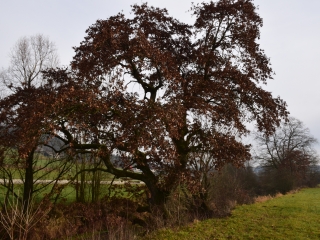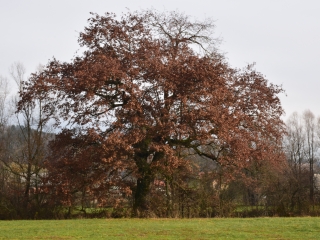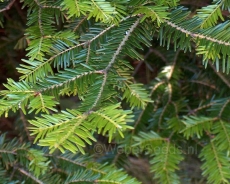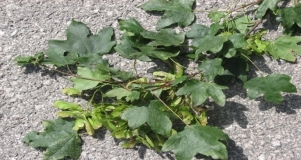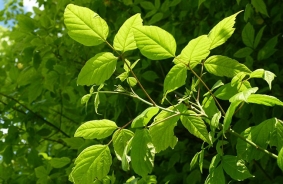Oak Quercus
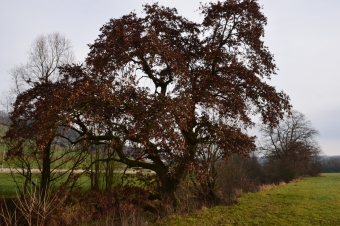
Features
In the forests, five different types of oaks are common: the common oak (Quercus robur), sessile oak (Quercus petrea), downy or pubescent oak (Quercus pubescens), Turkey oak or Austrian oak (Quercus cerris), evergreen or holly oak (Quercus ilex) and the Spanish oak (Quercus crenata).
| Species | Trees (Macrofanerophytes) |
| Living space | Deciduous forest, Field, Meadow |
| Size | Grows up to 45 m high. |
| Weight | up to 90 tonnes |
Description
In Slovenia, the most widespread are the common and sessile oaks, which appear as an admixture in leafy and mixed forests. In the past, predominantly the lowland forests of the common oak, cut down for agriculture, thrived in Slovenia. Today, only the Krakov forest near Kostanjevica na Krki and some remains in Pomurje are preserved as an oak forests. Oak trees account for around 8% of the total wood stock of Slovenian forests and powdery mildew also threatens the oak. The common oak (Quercus robur) is found in lowland forests where the soil is wetter. It thrives along rivers and lakes. The common oak grows up to 45 m high and reaches up to 2.5 m in diameter. It has a strong and well developed root system. Its bark is gray and smooth when the plant is young and later it breaks. Their longitudinal cracks are strong and deep and the transverse are shallower. The leaves measure up to 15 cm in length and up to 10 cm in width. The leaves have a short stalk (0.5 to 1 cm). The trees blossom in May and the acorn matures in October. It thrives best on deep, mineral and humus-rich soils with high groundwater. It also grows well in areas that flood occasionally. Its wood is highly valued as it is hard and stable. Its density ranges from 390 to 790 kg / m3. It is used for the construction of ships (masts), in carpentry, for furniture, in flooring, construction, and for the manufacture of barrels. The bark is used in healing as it contains tannin and other medicinal substances. Acorns are used as food for domestic animals. The Sessile oak (Quercus petrea) is our fourth most common tree species. It represents 6.2% of the wood stock. It is widespread (almost) all over Slovenia. It is only rarely found at the lowest points of valleys and in basins as it prefers somewhat warmer and more droughty sites. The sessile oak grows up to 40 m high and reaches a diameter of up to 3m. Its bark is gray with shallow cracks. More distinct are its longitudinal cracks. The oak forms strong primary roots and its leaves can measure up to 12 cm in length and up to 7 cm in width. The leaf stalks are 1.5 to 4 cm long. It blossoms in May and the acorns mature in October. The oak thrives well on relatively fine, well-aerated and slightly acidic sandy clay soils. It prefers to grow in fresh earth, but will not tolerate stagnant water. This particular oak requires a lot of light. Its wood is somewhat less valued than wood of the common oak, although it does not lag behind in its quality. Its density is about 660 kg / m3 and it is used for the manufacturing of furniture, parquet and barrels. Tannin is also extracted from the bark and used for the tanning of hides. The acorns are used as pet food (pigs).Oak
on the habitat Temenica
On the riverbed of the Temenica River, individual oak trees can be seen. The Temenica Habitat app allows you to see the GPS location.
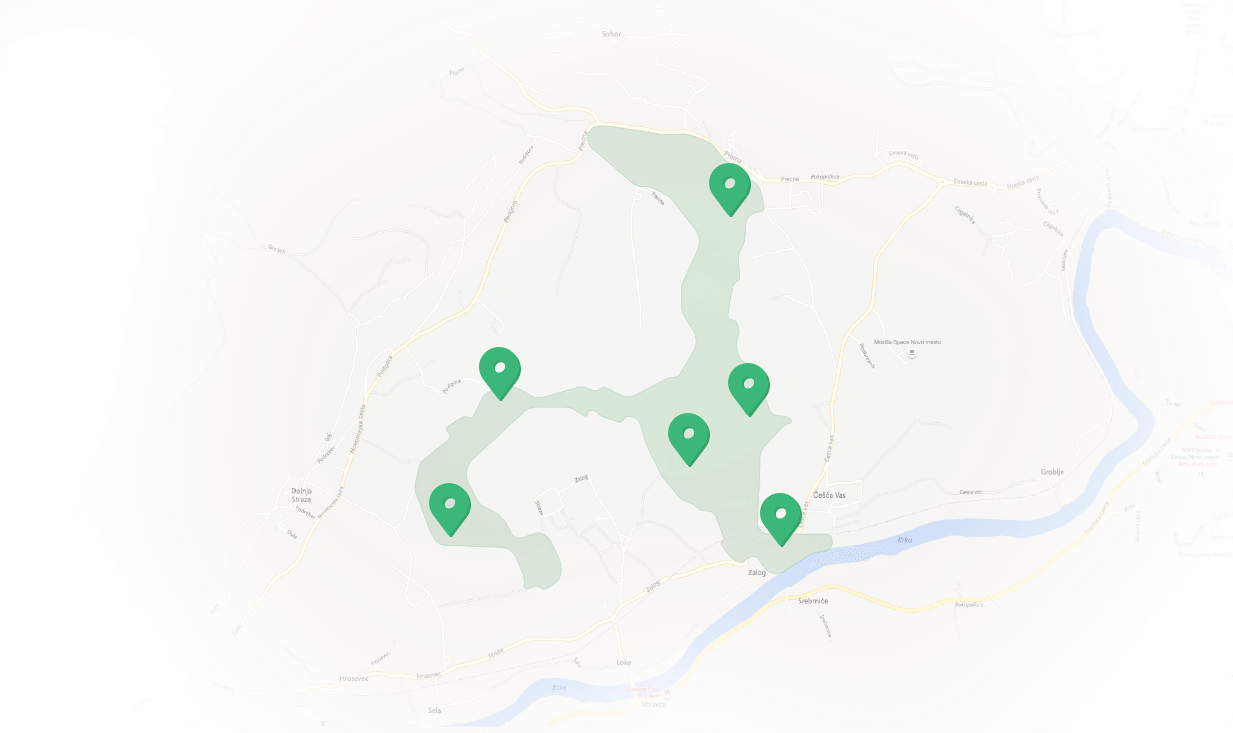
Features Temenica (3)
SPECIAL ogr.

